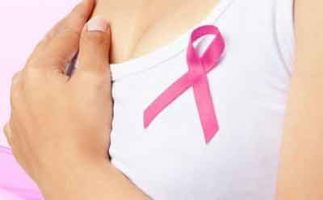- Home
- Editorial
- News
- Practice Guidelines
- Anesthesiology Guidelines
- Cancer Guidelines
- Cardiac Sciences Guidelines
- Critical Care Guidelines
- Dentistry Guidelines
- Dermatology Guidelines
- Diabetes and Endo Guidelines
- Diagnostics Guidelines
- ENT Guidelines
- Featured Practice Guidelines
- Gastroenterology Guidelines
- Geriatrics Guidelines
- Medicine Guidelines
- Nephrology Guidelines
- Neurosciences Guidelines
- Obs and Gynae Guidelines
- Ophthalmology Guidelines
- Orthopaedics Guidelines
- Paediatrics Guidelines
- Psychiatry Guidelines
- Pulmonology Guidelines
- Radiology Guidelines
- Surgery Guidelines
- Urology Guidelines
JAMA Study Examines Use of Fat Grafting for Postmastectomy Breast Reconstruction

The use of fat grafting as a tool for breast reconstruction following a mastectomy may improve breast satisfaction, psychosocial well-being, and sexual well-being in patients, according to a study published by JAMA Surgery.
Fat grafting as an adjunct to breast reconstruction involves harvesting fat cells from the abdomen or thighs via liposuction, isolating the adipocytes (fat cells) by removing any extra material, and then injecting it in small amounts to the deficient areas of the reconstruction. Fat grafting has proven to be a useful adjunct to breast reconstruction for the treatment of contour irregularities and volume deficits, but the U.S. Food and Drug Administration is considering regulations that may severely limit the ability of plastic surgeons to continue its use for this purpose. Jeffrey H. Kozlow, M.D., M.S., of the University of Michigan Health System, Ann Arbor, and colleagues conducted a study that included 2,048 women who underwent breast reconstruction after mastectomy.
Of these women, 165 (8 percent) underwent fat grafting between years 1 and 2 after surgery. One year postoperatively, patients who later underwent fat grafting reported significantly lower breast satisfaction, psychosocial well-being, and sexual well-being, compared with those who did not receive subsequent fat grafting. Following the procedure, the fat-grafted group reported similar breast satisfaction for these measures two years postoperatively.
“By providing multicenter, prospective data confirming the benefits of autologous fat grafting as a useful adjunct in breast reconstruction, we hope that this study will contribute to the ongoing discussion with payers and regulators over the safety and effectiveness of these procedures. Our findings should bolster the ongoing assertion that fat grafting is an important tool in breast reconstruction and that this option should remain available to reconstructive surgeons and to the patients they serve,” the authors write.
A limitation of the study was that as with any nonrandomized study design, the findings may have been attributable to unknown confounders not controlled for in the analysis.
To Read the full article click on the link : http://jamanetwork.com/journals/jamasurgery/fullarticle/10.1001/jamasurg.2017.1716

Disclaimer: This site is primarily intended for healthcare professionals. Any content/information on this website does not replace the advice of medical and/or health professionals and should not be construed as medical/diagnostic advice/endorsement or prescription. Use of this site is subject to our terms of use, privacy policy, advertisement policy. © 2020 Minerva Medical Treatment Pvt Ltd